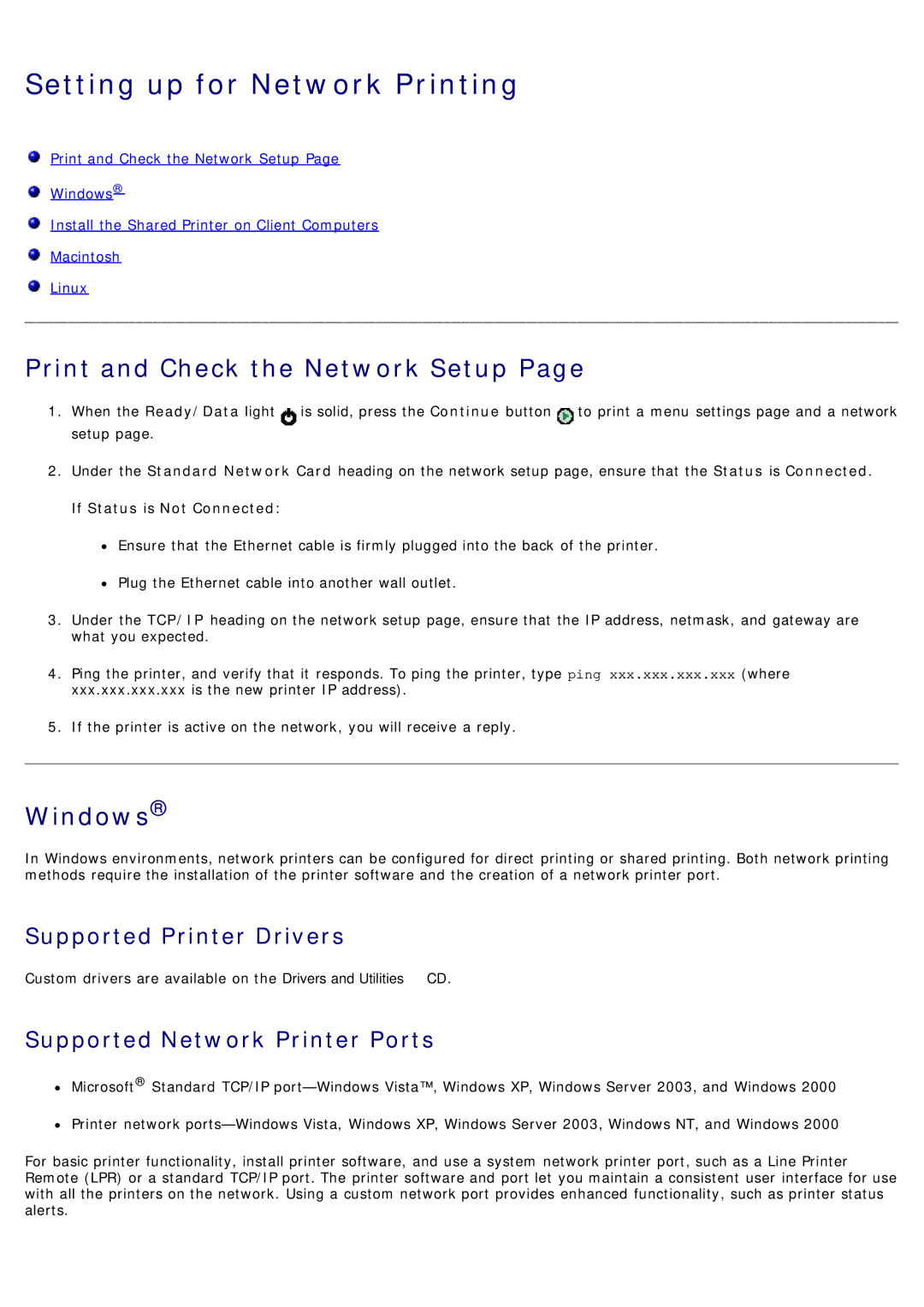
Setting up for Network Printing
![]() Print and Check the Network Setup Page
Print and Check the Network Setup Page
![]() Windows®
Windows®
![]() Install the Shared Printer on Client Computers
Install the Shared Printer on Client Computers
![]() Macintosh
Macintosh
![]() Linux
Linux
Print and Check the Network Setup Page
1.When the Ready/Data light ![]() is solid, press the Continue button
is solid, press the Continue button ![]() to print a menu settings page and a network setup page.
to print a menu settings page and a network setup page.
2.Under the Standard Network Card heading on the network setup page, ensure that the Status is Connected. If Status is Not Connected:
![]() Ensure that the Ethernet cable is firmly plugged into the back of the printer.
Ensure that the Ethernet cable is firmly plugged into the back of the printer.
![]() Plug the Ethernet cable into another wall outlet.
Plug the Ethernet cable into another wall outlet.
3.Under the TCP/IP heading on the network setup page, ensure that the IP address, netmask, and gateway are what you expected.
4.Ping the printer, and verify that it responds. To ping the printer, type ping xxx.xxx.xxx.xxx (where xxx.xxx.xxx.xxx is the new printer IP address).
5.If the printer is active on the network, you will receive a reply.
Windows®
In Windows environments, network printers can be configured for direct printing or shared printing. Both network printing methods require the installation of the printer software and the creation of a network printer port.
Supported Printer Drivers
Custom drivers are available on the Drivers and Utilities CD.
Supported Network Printer Ports
![]() Microsoft® Standard TCP/IP
Microsoft® Standard TCP/IP
![]() Printer network
Printer network
For basic printer functionality, install printer software, and use a system network printer port, such as a Line Printer Remote (LPR) or a standard TCP/IP port. The printer software and port let you maintain a consistent user interface for use with all the printers on the network. Using a custom network port provides enhanced functionality, such as printer status alerts.
